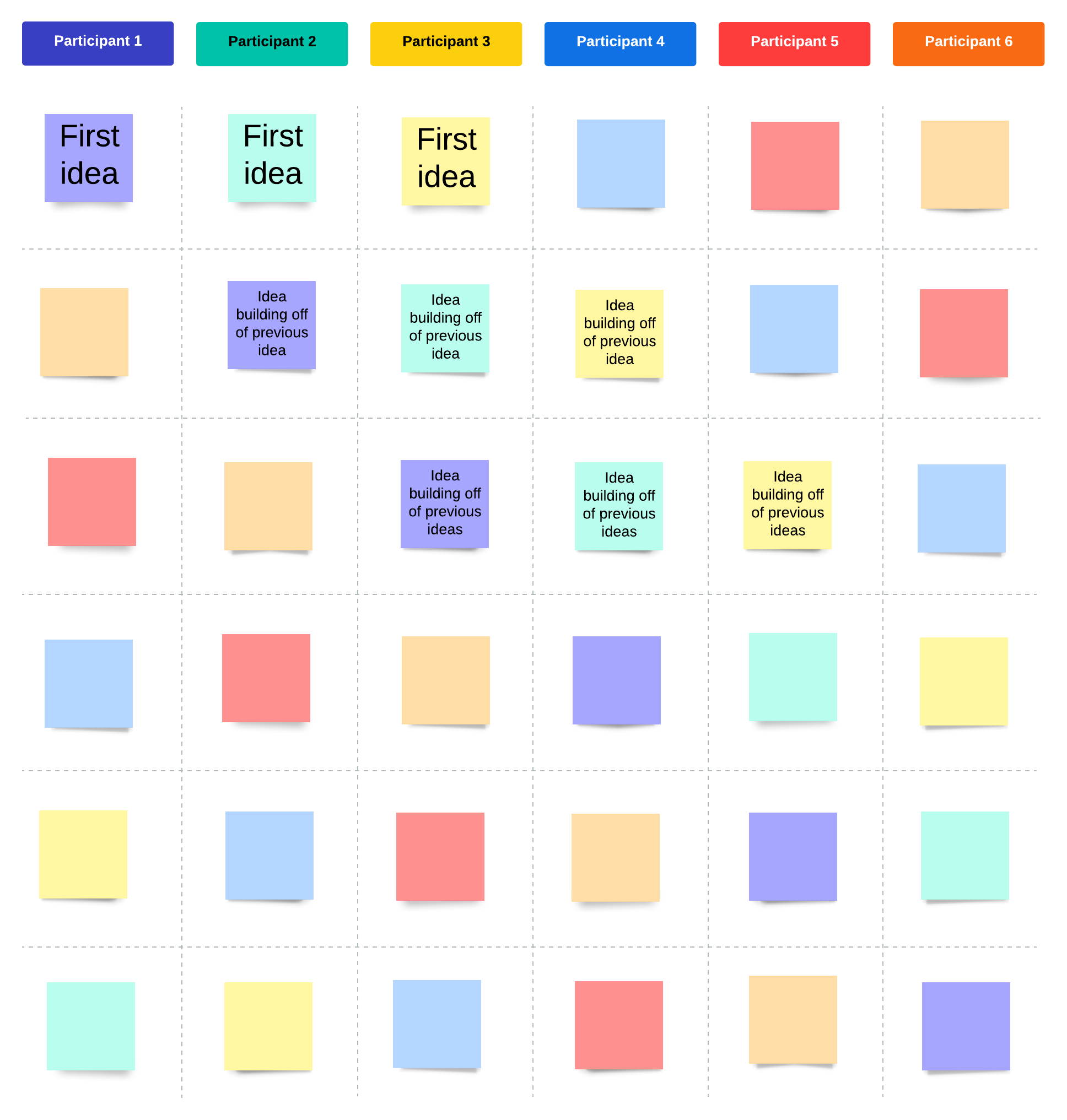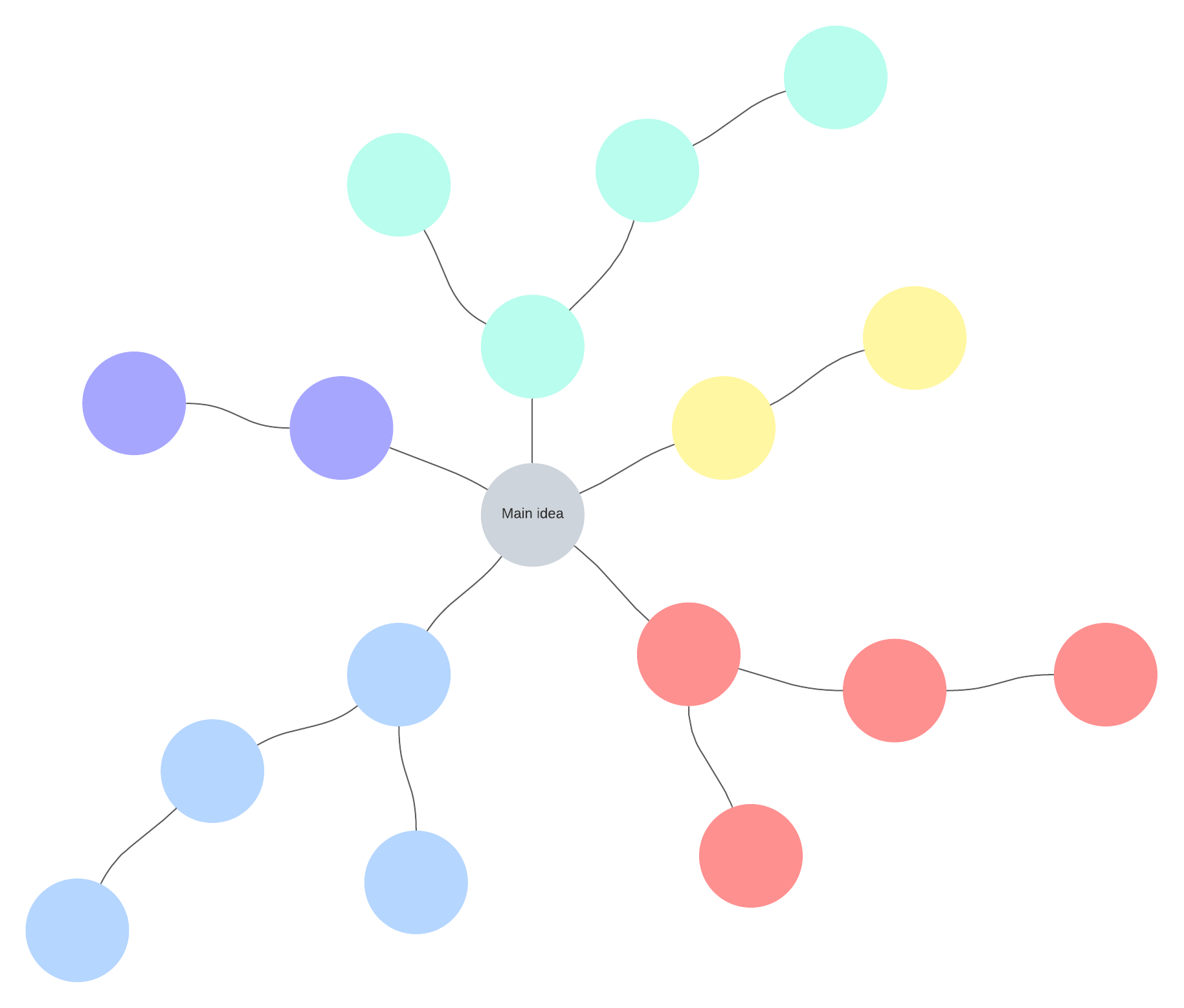When we brainstorm as a team effectively, magic can happen.
However, activating group creativity and gathering collective solutions can often prove to be an elusive and difficult process. There are a lot of challenges that come with group problem-solving. After all, everyone tackles obstacles in their own unique way.
Without an effective framework and approach in place before diving into the brainstorming process, you may end your session with even more problems to solve than you started with. Ideas can clash and time can be wasted without practical brainstorming techniques.
That’s why it’s so important to be prepared to challenge your team with good brainstorming questions to get the creative juices flowing.
Why questions boost creativity during brainstorming sessions
A compelling, well-timed question can activate lively discussions and unexpected solutions. A poor brainstorming question meant as a shortcut to a solution can often get you blank stares and an awkward silence. We’ve all been there!
That’s why it’s important that team leaders utilize and prepare creative brainstorming questions that encourage free thinking, creativity, and, yes, even more questions from your team. At face value, facilitating a conversation that creates even more questions might seem like it could lead to wasted time, but it’s actually an effective way to help your team invest in solving the problem at hand and engage in dynamic solutions as a group.
Below we cover a wide range of brainstorming questions team leaders can use.
Creative brainstorming questions
To begin, it’s important to create an environment where your team feels open to contributing and solving problems as a group. This is a space where the team is encouraged to keep an open mind, check their egos at the door, and not pass judgment on any idea proposed.
At such an early stage, brainstorming is more about the quantity rather than the quality. Good brainstorming is a means to gather as many ideas as possible and expand on them at a later time. It should be clear that the immediate goal is tossing as many ideas at the wall as possible and seeing what sticks. A team set up for success knows that, at the beginning stages, there are no bad ideas.
Introductory questions
Introductory brainstorming questions set the foundation and direction for your discussion. Use these brainstorming questions to establish your shared goals and align on what problem you aim to solve.
1. What are the goals we hope to achieve today?
2. What are the facts about this project/obstacle?
3. What insights do we have in terms of information, figures, or data that will be helpful?
4. What additional data or resources do we need to solve this challenge?
5. What about this project is exciting?
6. What are the areas of this project we perceive to present the biggest possible challenge?
Information-gathering questions
These brainstorming questions help align the team on the scope and context of the problem you’re addressing. Asking these questions early can help you avoid misunderstandings down the line and ensure your ideas are feasible.
7. How will our lines of communication function?
8. What will our methods of reporting be?
9. What skills are required to reach our goal?
10. What financial obstacles might we come across during this project?
11. How will we raise these funds?
12. How will we track our progress?
13. How and when will we ensure delivery of our finished product?
Questions meant to encourage discussion
Open-ended brainstorming questions like these facilitate discussion and get people thinking creatively about the problem or goal you’re focusing on.
14. What are your initial impressions of this project?
15. How would you briefly outline or pitch this project?
16. Can you explain these obstacles as simply as possible?
17. What makes our organization/team uniquely equipped to tackle this project?
18. What does our organization/team lack in order to see this project succeed?
19. How can we be prepared to account for our weaknesses?
20. How would a different organization approach this project?
21. What makes this product/project desirable to a customer?
22. What is the root of our problem here?
23. What is the best possible outcome for our project?
Problem-solving questions
Solving problems is at the heart of brainstorming. Use these brainstorming questions to help your team tackle problems creatively and comprehensively.
24. Do we have ideas that we’re able to combine?
25. How can we implement our ideas in a different way?
26. Are there solutions you’ve used in other projects that would be helpful here?
27. What are three other ways of looking at this challenge?
28. What are other examples of projects/products similar to ours that have been successful?
29. How have similar projects/products failed?
30. If there were no limitations, how would we approach this project?
Reflection questions
Reflection is an important part of the creative and iterative brainstorming process. Use these brainstorming questions to help your team identify potential gaps in the discussion or proposed solutions, plan next steps, and identify opportunities for improvement.
31. What are our next steps?
32. What have we learned about our project?
33. Are there other team members or unique skill sets required for us to achieve these goals?
34. What might affect the timing of completing this project?
35. What factor or idea deserves the most focus at this time?
Lucidspark brainstorming resources
Of course, asking creative brainstorming questions and facilitating a conversation to jumpstart creativity is only one way to generate new ideas and solutions. Lucidspark has a number of resources to facilitate brainstorming in new and innovative ways.
Brainwriting template
Lucidspark’s brainwriting template is a technique used to generate a number of ideas in a short period of time. After a long session of sharing ideas aloud in a roundtable discussion, team members might be ready to take a breather and engage in a more introspective exercise.
Team members are asked to each write down three ideas in five minutes on sticky notes. The sticky notes are then passed around and more ideas are added to each. This process repeats for 10-15 minutes before all ideas are collected and discussed as a group. This technique allows team members a more structured format to share ideas with the group and gives a voice to each individual so all ideas are heard.

Mind map template
Lucidspark’s mind map template is another great tool for visualizing and organizing your team’s creative solutions. Highlight an idea or goal in the center of a diagram and use lines to link related themes.
Mind maps are a useful way to assemble the ideas and results from brainstorming sessions all in one place, while also providing access to dynamic formatting, colors, and visuals. Mind maps allow you to modify and manage diverse sets of ideas quickly and in a single document.

Reverse brainstorming template
Reverse brainstorming is a technique that asks team members to identify gaps and possible roadblocks in a project’s future. Lucidspark’s reverse brainstorming template prompts a group to outline all the ways in which a plan or project might fail in order to more easily foresee solutions to headaches and complications before they arise.

Brainstorming is a valuable tool, but only when the process has been set up to succeed. By preparing creative brainstorming questions, you’ll improve your leadership performance and also encourage your team to think freely to solve the problem at hand.

Want to level up your brainstorming even more? Check out these seven tips.
Learn moreAbout Lucidspark
Lucidspark, a cloud-based virtual whiteboard, is a core component of Lucid Software's Visual Collaboration Suite. This cutting-edge digital canvas brings teams together to brainstorm, collaborate, and consolidate collective thinking into actionable next steps—all in real time. Lucid is proud to serve top businesses around the world, including customers such as Google, GE, and NBC Universal, and 99% of the Fortune 500. Lucid partners with industry leaders, including Google, Atlassian, and Microsoft. Since its founding, Lucid has received numerous awards for its products, business, and workplace culture. For more information, visit lucidspark.com.
Related articles
Boost your brainstorming with Dynamic Table [+course]
Learn how to use Dynamic Table—a powerful way to organize brainstormed ideas, plan your work visually, and take actionable steps. Includes free course!
How to use starbursting for brainstorming
In this article, we’ll cover what starbursting is, why you should use it, and how to use starbursting to produce better ideas, make better decisions, and solve problems more effectively.
6 brainstorming warm-up exercises to activate your creativity
Try these brainstorming warm-up exercises to get the creative juices flowing for your next brainstorming session.
5 group brainstorming techniques for winning teams
Turn your brainstorming woes into wins with these five group brainstorming techniques and best practices.

